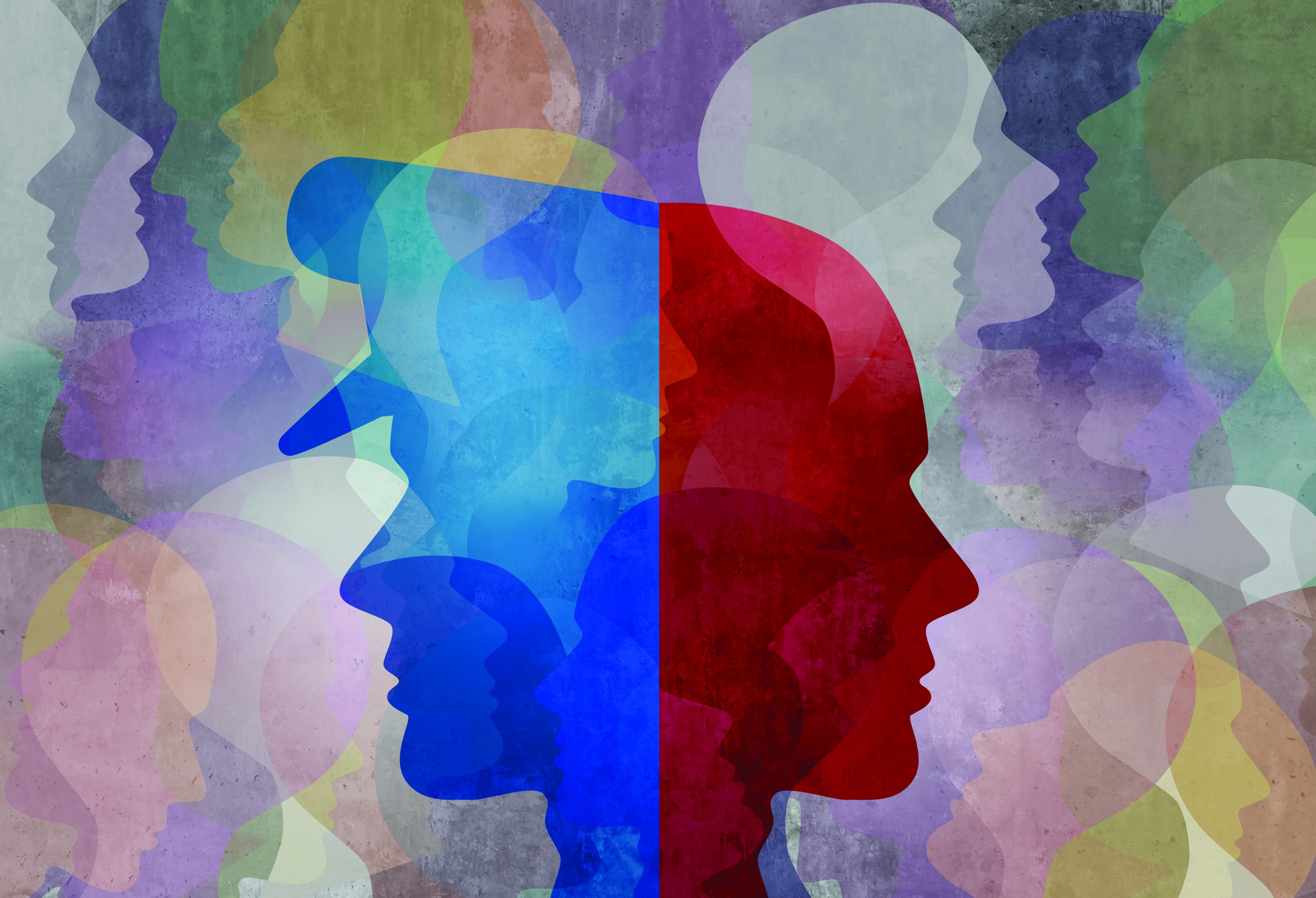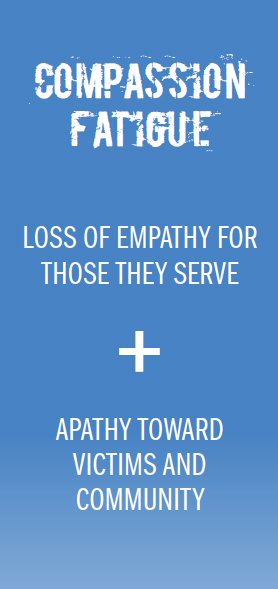It’s a journey of a lifetime to really unpack who you are and what you are good at, what makes you tick, what are your passions. And then, to learn how to understand and empathize with others. I believe a lot of that satisfaction we get in life is because of our ability to empathize.
—Satya Nadella, CEO, Microsoft1
As the profession of policing again evolves in response to the communities the police serve, it is important to take this opportunity to reflect on the role of empathy in the professional and personal lives of law enforcement officers. For several years at the Ontario Police College (OPC) in Ontario, Canada, the concepts of empathy have been examined, contextualized, and integrated into many aspects of police training for new police recruits as well as experienced police service personnel, sworn and civilian. As many as 1,500 new police recruits and hundreds of senior police service personnel receive training that includes these concepts at OPC in any given year.
Empathy Training – Recruits
New police officers start their provincially mandated 60-day residential training program with an introduction to mental health and personal resilience building. Certified trainers deliver the Road to Mental Readiness (R2MR) program, which has been adapted from the program used by the Canadian Forces.2 The half-day mental health program focuses on improving officers’ performance in the demanding program by teaching the Mental Health Continuum Model and the Big Four resilience-building strategies of goal setting, visualization, positive self-talk, and deep relaxation breathing.3
As unique individuals, the life experiences [officers] bring to the job are important.
Part of the resilience-building process supports the officers’ understanding that, as unique individuals, the life experiences they bring to the job are important. As such, when they leave the OPC training environment to work with a coach officer, then during operational field training, their responses to various traumatic events will be unique. As a result, officers should be able to express empathy for colleagues and peers who may have an adverse response—as well as self-compassion when the adverse response is theirs.
The more specific introduction to education about empathy and how it is operationalized within policing comes during each of the three leadership sessions that are evenly spaced throughout the 60-day recruit program allowing for the integration and application of lessons within the police training context. Leadership session one includes an introduction to emotional intelligence with the students completing the Emotional and Social Competency Inventory self-assessment questionnaire and workbook.4

The self-assessment provides feedback for each student on the four areas: self-awareness (emotional self-awareness); self-management (emotional self-control, achievement orientation, positive outlook, adaptability); social awareness (empathy, organizational awareness); and relationship management (influence, coach and mentor, conflict management, inspirational leadership, teamwork). This self-assessment tool defines empathy as the ability to read people’s moods, respect and relate well to people of diverse backgrounds, listen attentively to others, understand others’ perspectives when they are different from one’s own, and understand the reasons for another’s actions.5
After several years of delivering these training sessions to new police recruits and reviewing the results of student feedback on a scale of 1 to 5 (never, rarely, sometimes, often, or consistently), the author has found that most students’ empathy scores are within the often and consistently range. This should not come as a big surprise as law enforcement is a service industry and many recruits are drawn to the profession because of their desire to protect others.
Leadership session two starts with reviewing the feedback and connecting the neurobiology of stress to the principles of the R2MR training, including the Big Four stress reduction resilience strategies. At this point in the program, students have undertaken many academic and practical skills training sessions, including a midterm examination. There are multiple assessments and opportunities for them to apply all the emotional intelligence competencies, especially self-awareness and self-management skills, including empathy. As part of session two, the students review their feedback scores and the discussion centers on how each competency is an important component of how the new officers can increase their operational effectiveness and successfully integrate into their organizations during the socialization process.
 During the discussion on social awareness where the emotional intelligence competency of empathy resides, integration is reinforced by two components of the recruit training program. The main connection is back to R2MR training because officers who are high in empathy are also more vulnerable to empathic strain (compassion fatigue). The operational context for empathy requires officers to use that competency to connect with others during investigative interviews and to maintain a victim-centered, trauma-informed approach. Of equal significance is the ability to use empathy to de-escalate high-stress situations. For officers to maintain their ability to empathize, they must practice self-compassion and self-care.
During the discussion on social awareness where the emotional intelligence competency of empathy resides, integration is reinforced by two components of the recruit training program. The main connection is back to R2MR training because officers who are high in empathy are also more vulnerable to empathic strain (compassion fatigue). The operational context for empathy requires officers to use that competency to connect with others during investigative interviews and to maintain a victim-centered, trauma-informed approach. Of equal significance is the ability to use empathy to de-escalate high-stress situations. For officers to maintain their ability to empathize, they must practice self-compassion and self-care.
Within the officer safety training unit, the behavioral influence stairway is taught by instructors as part of a comprehensive program. The three components of the behavior influence stairway are establishing empathy, building rapport, and influencing behavior.6 Empathy and influence are the cornerstones of this de-escalation strategy, and both are part of the social awareness or relationship management and emotional intelligence competencies. As the recruits participate in de-escalation scenarios, those who are high in empathy report finding it easier to make connections and move into the rapport-building stage. During these scenarios, those who are empathetic also start to see how self-compassion and self-care are important to their rest and recovery during high-stress interactions.
The third leadership session focuses on understanding and applying the elements of empathy to professional police practice. This session starts with a review of the elements of influence and how operational effectiveness, measured as gaining cooperation or compliance, is reduced when efforts are not made to establish empathy and build rapport. This is not only an externally focused discussion, as cooperation and collaboration are also required internally for police service members to respectfully engage in carrying out operational responsibilities. During the second half of session three, the recruits are directed to the mission and values statements of their various police services.n
At their core, the mission statements almost universally identify service, support for victims, and partnerships with the community on public safety and enforcement issues as part of their mandates. The values statements include words like trust, transparency, understanding, prevention and enforcement, compassion, service, cooperation, professionalism, community engagement, quality of life, partnerships, safety, and security. The students are then asked to connect the expectations of the public with the mission of the police service and link that to their role in delivering professional policing service as a member of their organization.
Overall, the purpose of emotional intelligence leadership training and, in particular, the competency of empathy is to demonstrate in an operational way how important it is to be aware of the role empathy plays in how police officers interact with the public and each other. During training on subjects such as diversity and professional practice, human trafficking, and crimes against persons, an appreciation of the value of empathy increases understanding and application of a victim-centered, trauma-informed approach. Effectively managing traumatic situations in a healthy way, supporting colleagues and peers, conducting professional and effective investigations, securing officer and public safety, and de-escalation are all the benefits of empathic behaviors.
An appreciation of the value of empathy increases understanding and application of a victim-centered, trauma-informed approach.
As part of a trauma-informed approach, all police officers because they provide direct support to victims of crime are recommended to demonstrate skills of empathy, compassion, the ability to talk openly, self-awareness, self-care and wellness, flexibility, comfort with the unknown, and a willingness to learn from the community members they serve.7 In this context, empathy is a replacement for sympathy, which can decrease communication by increasing feelings of shame and creating a barrier to seeking help. In contrast, when officers “demonstrate empathy and compassion by communicating their own feelings to the individual” genuine connectivity is increased and barriers to seeking help are reduced.8 By not creating added stigma for those who are already experiencing trauma, police officers are more effective in investigations of serious crimes.
Empathy Training – Senior Officers
The impact of empathy on the complexity and variety of criminal investigations undertaken by senior detectives is a subject worthy of significant consideration and this article only touches the surface. For senior courses, the integration of empathic training focuses on resilience and well-being for investigators who deal with serious crimes against persons. For these investigators, the empathy component of their training focuses on the officers intentionally addressing all aspects of their own well-being in order to successfully maintain their ability to undertake the often traumatic and prolonged investigative process.
“Having empathy for others and self-compassion allows officers to create a virtuous circle within the operational environment.”
Different from frontline police work, criminal investigators are involved in complex investigations and exposed to primary and secondary victims, heavy caseloads, lack of resources, public perceptions, and the sustained duration of these investigations. The workload is often more demanding with longer work hours, increased emotional labor and load, and less opportunity for rest and recovery periods. These factors are even more apparent for forensic investigators and highly trained traffic accident reconstructionists, who may spend days at a complex scene, document autopsies, and process numerous items of evidence.
These investigative specialists also use each other as an informal support system for discussions of ongoing investigations. This means the officers are exposed to the sometimes graphic and disturbing details of their own investigations as well as those of their colleagues and peers. If this process of professional consultation is not done in a thoughtful and respectful way, the officers can unintentionally traumatize each other. The TEND Academy offers training for emergency services and military personnel on how to manage compassion fatigue (empathic strain).9 A very practical part of the training is on how law enforcement officers conduct conversations about each others’ cases, called “low impact debriefing.”
If the process of professional consultation is not done in a thoughtful and respectful way, the officers can unintentionally traumatize each other.
Low impact debriefing is a four-step process where officers demonstrate empathy for each other by being intentional about how they work together to consult on investigations. When investigators want to discuss a case with their peers, they first use “self-awareness” by consciously considering how much detail is required to be shared during the consultation. Would a summary without graphic details still communicate all the necessary information? Then investigators give peers “fair warning” about the wish to debrief or consult on a difficult situation with some “traumatic content.” Next, “consent” is given by peers to confirm this is a good time for the conversation or that time can be set aside later in the day for a consultation. The final step involves “limited disclosure” where decisions are made as to how much graphic detail is shared during the conversation.
Having empathy for others and self-compassion allows officers to create a virtuous circle within the operational environment where they are increasingly effective at achieving the organizational goal of serving the public, while also supporting a psychologically safe workplace where all members can work to stay physically and psychologically healthier throughout a long, challenging career.
Empathic policing requires acquiring a “both/and” mentality and setting aside “‘either/or” thinking patterns. To be successful throughout the course of their careers, police officers should work to maintain their mental and physical well-being, refine their technical skills by way of annual refresher or professional development training, and maintain their empathy through self-awareness and resilience-building practices. By integrating the academic understanding of empathy with genuine self-awareness of how it impacts each individual and operationalizing the components of empathy to best serve the purpose of policing, law enforcement professionals create healthy organizations and communities. d
Notes:
1Jenny Luna, “How to Lead with Empathy,” Rotman Management (Fall 2020): 93.
2Mental Health Commission of Canada, The Road to Mental Readiness (R2MR), fact sheet, August 2014.
3University of Waterloo, “Defining the Mental Health Continuum,” Thrive Toolkit; Cameron Keller, “Strategies for Building Resilience,” Kaleidoscope Training and Consulting, Inc., September 1, 2020.
4Daniel Goleman and Richard Boyatzis, Emotional and Social Competency Inventory, Self Assessment Questionnaire and Workbook, University ed. (Korn Ferry).
5Goleman and Boyatzis, Emotional and Social Competency Inventory, Workbook, 10.
6Ryan O’Connell, “Mastering Change: The Behavioral Change Stairway Model,” Ursa Health, November 10, 2020.
7Manitoba Trauma Information and Education Centre, Trauma-Informed: The Trauma Toolkit, 2nd ed. (Klinic Community Health Centre, 2018), 98–100.
8Manitoba Trauma Information and Education Centre, Trauma-informed, 98.
Please cite as
Irene Barath, “Developing and Utilizing Empathy in Police Organizations,” Police Chief Online, February 1, 2023.



